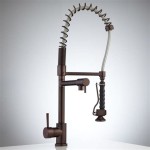Ceramic tile is a popular choice for kitchen floors, walls, and backsplashes. It is an affordable, durable, and attractive material that can be used in a variety of styles. It is easy to clean, slip-resistant, and can last for decades if properly cared for. In this article, we will discuss the advantages of ceramic tile, the different types available, and how to install ceramic tile in your kitchen.
The Benefits of Ceramic Tile
Ceramic tile is a popular choice for kitchens due to its durability, low maintenance, and attractive look. It is waterproof, slip-resistant, and easy to clean, making it ideal for wet areas like the kitchen. It is also fire resistant and won’t fade or discolor over time. Additionally, ceramic tile is cost-effective and can last for decades with proper care and maintenance.
Types of Ceramic Tile
Ceramic tile comes in a variety of styles and colors, making it easy to find a look that fits your kitchen. Glazed ceramic tile is the most common type and is available in a wide range of patterns and colors. Unglazed ceramic tile is also available and is best for floors as it is more slip-resistant. Finally, porcelain tile is made with a finer clay and is denser and more durable than other types of ceramic tile.
Installing Ceramic Tile
Installing ceramic tile in your kitchen is a relatively straightforward process. First, you must prepare the surface by removing any old tile or other material and making sure the surface is level. You’ll then need to lay out the pattern of the tiles on the floor and mark where the tiles will go. Finally, you’ll need to apply adhesive, lay the tile, and grout the joints.
Conclusion
Ceramic tile is an affordable, durable, and attractive choice for kitchen floors, walls, and backsplashes. There are many types and styles available, making it easy to find a look that fits your kitchen. Installing ceramic tile is a relatively straightforward process and can be done by most DIYers. With proper care and maintenance, ceramic tile can last for decades.











:max_bytes(150000):strip_icc()/GettyImages-113860134-5a04b6efb39d03003718c8a8.jpg)



Related Posts








